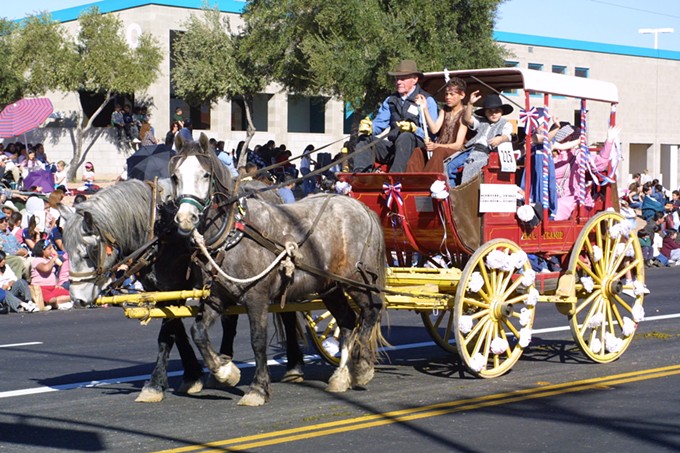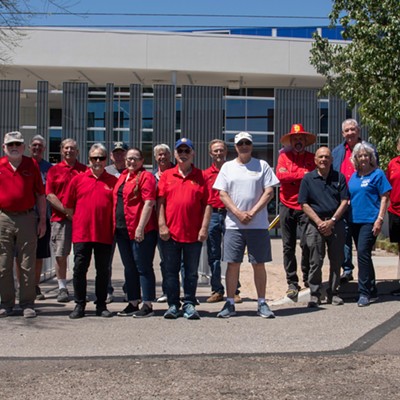
Officials have unveiled route changes for the 99th annual Tucson Rodeo Parade set for 9 a.m. Thursday, Feb. 22.
This change — after 30 years — came after Union Pacific decided to no longer hold trains for the three hours required for the event. The new parade route will begin at South 12th Avenue and Drexel Road, ending at Irvington Road.
The Tucson Rodeo Parade Committee worked alongside the city and the Sunnyside Neighborhood Association to facilitate this change. All parties worked to make this historic Tucson tradition continue for its 99th year.
Tucson Rodeo Parade’s public information officer, Herb Wagner, noted problems in dealing with Union Pacific in the years following the last route change.
“With Southern Pacific (Railroad), we didn’t have a problem,” Wagner said.
“We had local people here who we could talk to and get them to hold the trains. When Union Pacific took over, they no longer had local folks we dealt with. We had to talk with people back in Kansas. And, for the last couple of years, they’ve been grousing about it. Last year, they were going to stop us. They didn’t want the parade to cross the tracks because they didn’t want to hold their trains going North and South into Mexico,” Wagner said.
Tucson city manager’s office public information officer, Andy Squire, said last year’s difficulties were due to Union Pacific not granting the Rodeo Parade Committee a track access permit. This permit would allow the parade to cross two spots with railroad tracks. Ultimately, the city, rodeo parade committee and Union Pacific agreed to allow the parade to continue for one more year.
Squire expressed the importance of this effort and the difficulties of maintaining such an event.
“We knew it was going to be a real challenge. Because 31 years ago, those communities — Ajo, Irvington, 12th Avenue, Drexel Road — they were not nearly as densely populated. There were still lots of neighborhoods down there, but there was not as much business presence,” Squire said.
“Now, it looks very different when you’re trying to reroute a nonmechanized, nonmotorized parade that is all horsed-based into a part of the community that still, very much, supports it. I’m amazed at how much our Southside communities support the rodeo parade tradition.”
Because of these challenges, Wagner thanked Squire and the Neighborhood Association for this cooperation.
“It’s been a challenge, but it’s been a wonderful experience working with those folks, both with the city and the Neighborhood Association to have this new route,” Wagner said.
Squire and Wagner explained that another significant challenge was addressing noise concerns with the horses, which could become unsettled by sounds bouncing off city buildings. Wagner explained that addressing this concern and ensuring there are few turns within the route should allow smooth operations during the parade.
Both said they look forward to this day and next year’s big 100th, saying that this tradition should continue into the foreseeable future.
The Tucson Rodeo Parade’s website, www.tucsonrodeoparade.com, has more information about the event, including a map of the updated route and ticket information.
The parade will offer free viewing for spectators along most of its route. Tickets for grandstand seating on Drexel Road near Liberty Avenue will be available for $12, with children ages 12 and under tickets available for $10. Limited parking near the grandstands will be available before 8 a.m., costing $5 per vehicle.
The parade will have over 120 entries, featuring roughly 2,300 people, 500 horses, 85 wagons, and eight marching bands. Local and national dignitaries will attend, as well as Native American tribal leadership. Guests should expect to see fanfare, such as performers and colorful floats.









